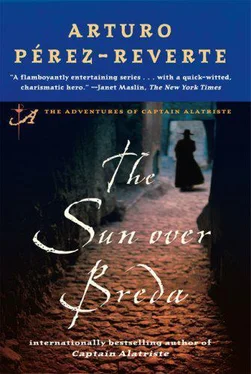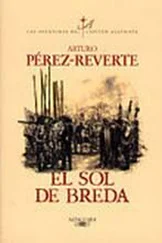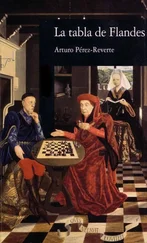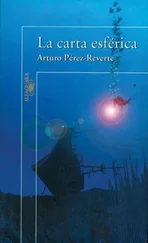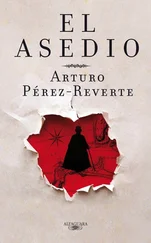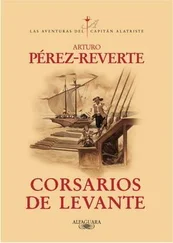Arturo Pérez-Reverte - The Sun Over Breda
Здесь есть возможность читать онлайн «Arturo Pérez-Reverte - The Sun Over Breda» весь текст электронной книги совершенно бесплатно (целиком полную версию без сокращений). В некоторых случаях можно слушать аудио, скачать через торрент в формате fb2 и присутствует краткое содержание. Жанр: Старинная литература, на английском языке. Описание произведения, (предисловие) а так же отзывы посетителей доступны на портале библиотеки ЛибКат.
- Название:The Sun Over Breda
- Автор:
- Жанр:
- Год:неизвестен
- ISBN:нет данных
- Рейтинг книги:5 / 5. Голосов: 1
-
Избранное:Добавить в избранное
- Отзывы:
-
Ваша оценка:
- 100
- 1
- 2
- 3
- 4
- 5
The Sun Over Breda: краткое содержание, описание и аннотация
Предлагаем к чтению аннотацию, описание, краткое содержание или предисловие (зависит от того, что написал сам автор книги «The Sun Over Breda»). Если вы не нашли необходимую информацию о книге — напишите в комментариях, мы постараемся отыскать её.
The Sun Over Breda — читать онлайн бесплатно полную книгу (весь текст) целиком
Ниже представлен текст книги, разбитый по страницам. Система сохранения места последней прочитанной страницы, позволяет с удобством читать онлайн бесплатно книгу «The Sun Over Breda», без необходимости каждый раз заново искать на чём Вы остановились. Поставьте закладку, и сможете в любой момент перейти на страницу, на которой закончили чтение.
Интервал:
Закладка:
And yet, Íñigo Balboa’s affirmation on "Chapter 1: Surprise Attack" of the first volume in this series sounds unequivocal: “…because later, on the bulwarks of Julich…my father was killed by a ball from a harquebus—which was why Diego Velázquez did not include him in his painting Surrender of Breda , as he did his friend and fellow Diego, Alatriste, who is indeed there, behind the horse.” These disconcerting words were for a long time considered by most experts to be less fact than gratuitous affirmation—Balboa’s exaggerated homage to his beloved Captain Alatriste—with no basis in truth. Balboa was a soldier in Flanders and Italy, a standard bearer and lieutenant at Rocroi, lieutenant of the royal mails, and captain of the Guardia Española of King Philip IV before retiring for personal reasons around 1660, at the age of fifty. That was after his marriage to doña Inés Álvarez of Toledo, the widowed Marquesa de Alguazas, and his later disappearance from public life. His memoirs came to light only in 1951, in an auction of books and manuscripts in the Claymore house in London. Arturo Pérez-Reverte used the memoirs as his documented source for The Adventures of Captain Alatriste , and he confesses that for a long time he believed that Íñigo’s assertion that Diego Alatriste did in fact appear in Velázquez’s painting was false.
But chance has finally resolved the mystery, disclosing data that had been overlooked by scholars and by the author of this series of novels based almost entirely on Balboa’s original manuscript.1 In August 1998, when I visited Pérez-Reverte in his home near El Escorial to clear up some editorial matters, he confided to me a discovery he had made accidentally as he was documenting the epilogue of the third volume of the series. Only the day before, while consulting José Camón Aznar’s Velázquez —one of the more definitive works on the author of The Surrender of Breda —Pérez-Reverte had come upon something that had left him stupefied. On pages 508 and 509 of the first volume (Madrid: Espasa Calpe, 1964), Professor Camón Aznar confirmed that an X-radiographic study of the canvas had validated some of Íñigo Balboa’s affirmations concerning the Velázquez painting that had at first seemed to be contradictory, such as the fact, proved on the X-ray plate, that the artist had originally painted standards instead of lances, not unusual in a painter famous for his pentimentos—modifications made along the way that led him to change outlines, alter compositions, and eliminate objects and persons already painted. In addition to the standards’ being replaced by lances, the horse on the Spaniards’ side was suggested in three different attitudes; in the background, in the correct geographical orientation, toward the Sevenberge dike and the sea, there appears to be an expanse of water and a ship; Spínola was sketched in a more erect position; and, on the Spanish side, it is possible to make out the heads and embroidered collars of additional personages. For reasons we cannot divine, in the definitive version Velázquez overpainted the head of a man who appears to be a noble, and also possibly another. And there is something more: In regard to Diego Alatriste’s presence, which Íñigo Balboa describes as he views the canvas and specifies his exact location— the area beneath the horizontal butt of the harquebus that the soldier without a beard or mustache was carrying over his shoulder —the viewer sees only empty space above the blue doublet of a pikeman whose back is turned.
The true surprise, however—proof that painting, like literature, is but a succession of enigmas and closed envelopes that enclose other closed envelopes—is buried in half a line on page 509 of Camón Aznar’s book and refers to that same very suspicious and empty space where the X-ray revealed that “behind that head one can make out another with an aquiline profile….”
Reality often amuses itself by confirming on its own what seems to us to be fiction. We do not know why Velázquez later decided to eliminate from his masterpiece a head he had already painted. Perhaps later books in this series will clarify that mystery.2 But now, almost four centuries after all that happened, we know that Íñigo Balboa did not lie and that Captain Alatriste was—and still is—on the canvas of The Surrender of Breda .
—The Editor
A SELECTION FROM
A POETRY BOUQUET
BY VARIOUS LIVELY MINDS
OF THIS CITY
Printed in the XVIIth century, lacking the printer’s mark, and conserved in the Condado de Guadalmedina section of the Nuevo Extremo Ducal Archive and Library, Seville
DON FRANCISCO DE QUEVEDO
Inscription to the Marqués Ambrosio Spínola,
Commander of Catholic Forces in Flanders
Sinon, Ulysses, and the Trojan HorseWon the day in Troy with treachery,Whereas in Ostend, leading your troops,It was your sword that crushed the enemy.
As your squads approached their wallsFrisia and Breda foresaw their destiny;Facing your might, the heretic gave way Hisbanners struck, his pennon a mockery.
You subjected the PalatinateTo benefit the Spanish monarchy,Your ideals countering their heresy.
In Flanders, we badly missed your gallantry,E’en more in Italy…and now this eulogyAmid sorrow we dare not contemplate.
THE CABALLERO OF THE YELLOW DOUBLET
To Íñigo Balboa, in his later years
’Pon my oath, no difference can I find’Twixt the young Basque known for his diligenceAnd the hidalgo once a Flanders soldier:That lad gave good account of his existence.
Hearing tales about your dashing swordsman,The orb, envisioning that experience,The flashing blade, the valiant adventure,With military tears bemoans his absence.
His valor was your fortune and your glory,And wonder at the days you lived with himWill be the one reaction to your story.
Because of you, thwarting oblivion,His memory will not be lost through time: Diego de Alatriste , Capitán!
DEFENSE OF THE GARRISON AT TERHEYDEN:
AN EXCERPT FROM ACT III OF THE FAMOUS PLAY
THE SIEGE OF BREDA
by Don Pedro Calderón de la Barca
D. FADRIQUE BAZÁN:Oh, if only Henry would marchThis way, engage the SpanishIn this place, a happy dayIt would be for our intentions!
D. VINCENTE PIMENTEL:We are not so fortunate, señor,As to be granted such a blessing.
ALONSO LADRÓN, CAPTAIN:I would venture that he will joinWith those fat flinflones , the German guard,With whom he is comfortably allied.We are told that when they hear our“Santiago! Close in for Spain!”Even though they know the nameAnd know he is our patron saintAnd one apostle of the twelve,They believe we call the devil,And that without discriminationWe summon devils as well as saints,And that all come to our aid.
D. FRANCISCO DE MEDINA:If Henry leads his troops alongThe Antwerp road, the ItaliansWill be waiting to engage him.
The bugle sounds “To Arms”
D. FADRIQUE:It seems that they are readyingFor battle.
ALONSO:God’s bones!It will be these same ItaliansWho glory in the occasionWhile we Spanish will be watchingWithout a fight!
D. FADRIQUE: Say not so! Allow Colonel de la Daga To choose for you a number Of the loyal men of Spain That in the furor of the battle They may show what swordplay is!
DON GONZALO FERNÁNDEZ DE CÓRDOBA: They would disobey?
DON FADRIQUE: Not at all! This is a place and time in which The man who does not draw his blade Will cease to call himself a man, And less, a Spaniard.
Читать дальшеИнтервал:
Закладка:
Похожие книги на «The Sun Over Breda»
Представляем Вашему вниманию похожие книги на «The Sun Over Breda» списком для выбора. Мы отобрали схожую по названию и смыслу литературу в надежде предоставить читателям больше вариантов отыскать новые, интересные, ещё непрочитанные произведения.
Обсуждение, отзывы о книге «The Sun Over Breda» и просто собственные мнения читателей. Оставьте ваши комментарии, напишите, что Вы думаете о произведении, его смысле или главных героях. Укажите что конкретно понравилось, а что нет, и почему Вы так считаете.
